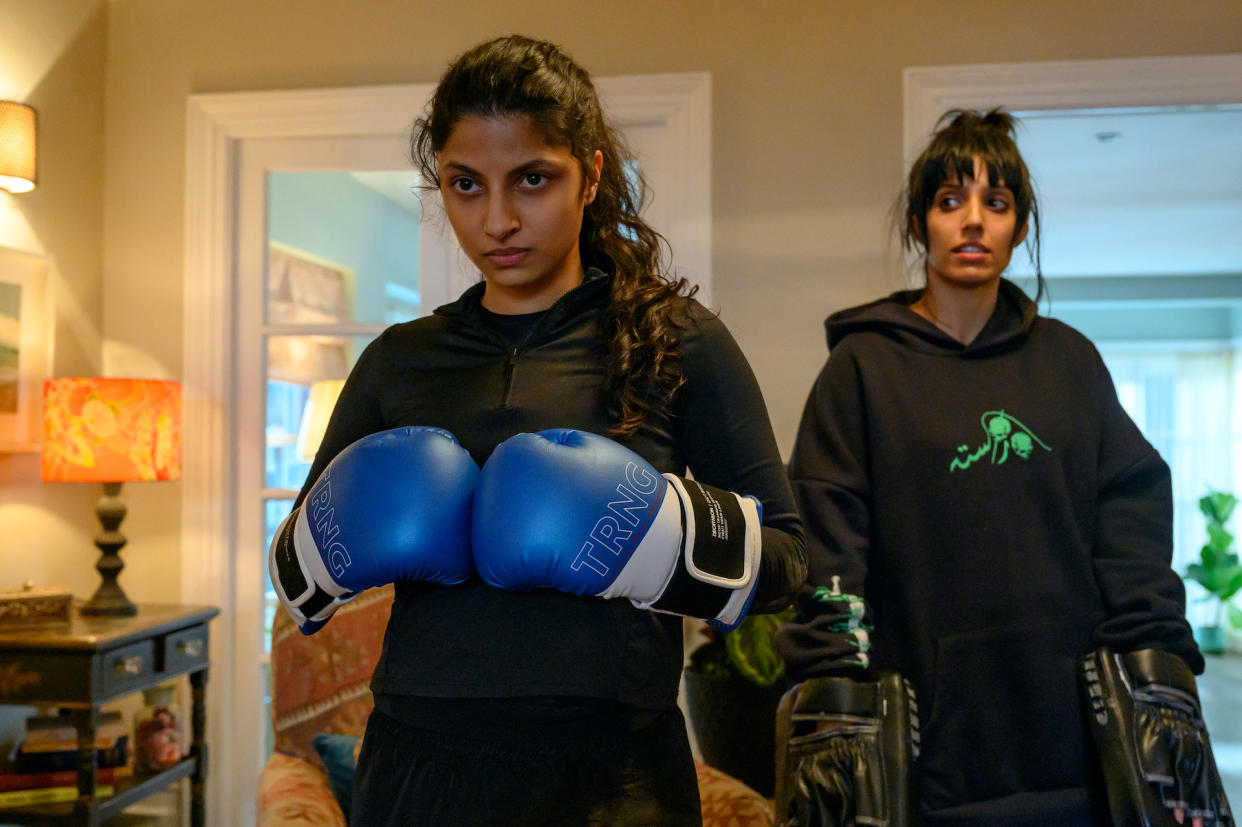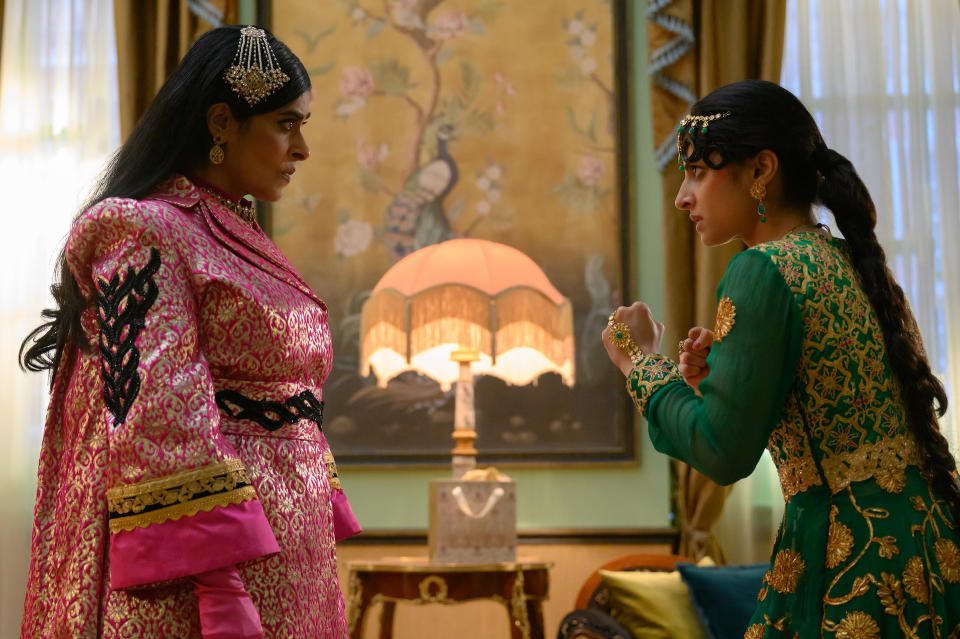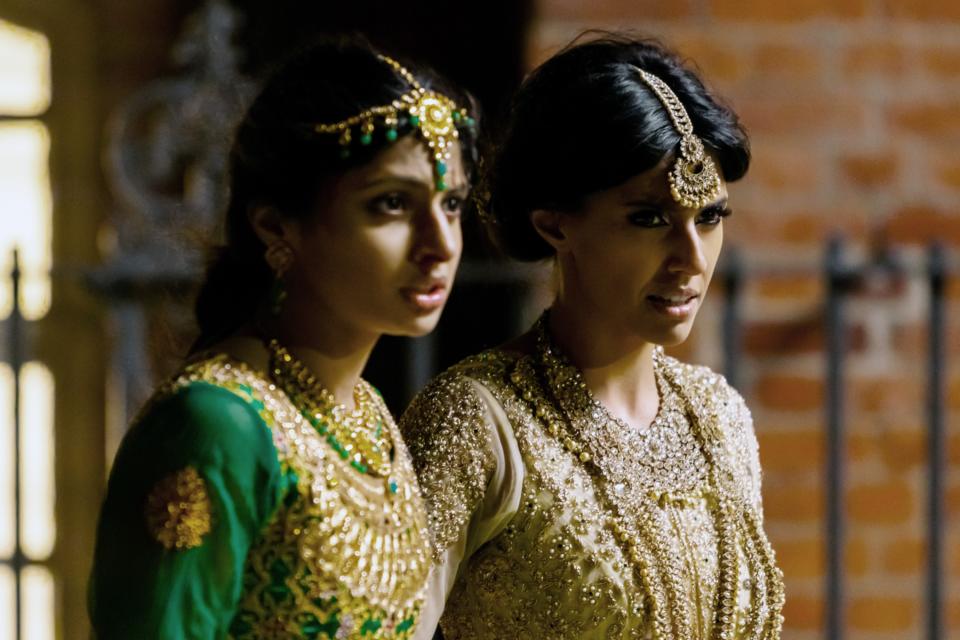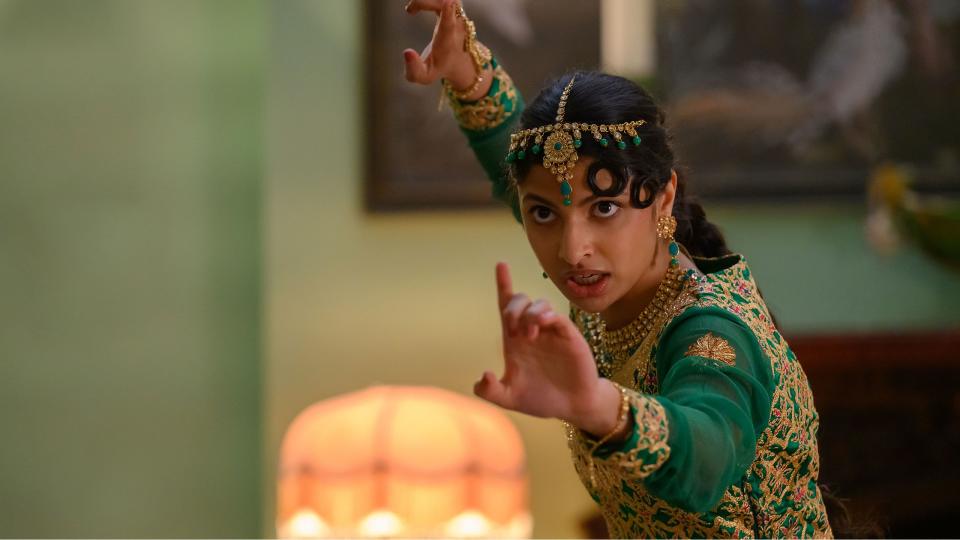How ‘Polite Society’ Created an Exhilarating Blend of Action from ‘The Matrix,’ Eunice Huthart, More

From the Bruce Lee poster on her wall to the spinning kick by real-life stuntwoman Eunice Huthart she spends hours trying to perfect, aspiring stuntwoman Ria Khan (Priya Kansara) lives and breathes action cinema. So did the team making “Polite Society,” which draws stylistically on everything from the heightened wirework action of “The Matrix” and “Crouching Tiger, Hidden Dragon” to the gleefully destructive chaos of “Kill Bill,” and actual, real-world karate bouts.
There’s a wonderful differentiation to the fights, which all feel as targeted and emotionally distinct as the songs in a musical: Ria slowly gets more confident, the stakes behind her sister Lena (Ritu Arya) marrying a too-perfect doctor Salim (Akshay Khanna) and acquiring a domineering mother-in-law Raheela (Nimra Bucha) get higher — and Ria’s schemes to stop the marriage get more bonkers.
More from IndieWire
“I always felt one of my North Stars with [‘Polite Society’] was I knew I wanted the action to kind of externalize this teenage girl’s inner angst, this sort of inner world of pain,” director Nida Manzoor told IndieWire. “[With] the sister fight, especially, I knew I needed it to be the bloodiest and brutalist because there’s something about your sister knowing what can hurt you the most and those words hurting more than anything.”
It fell to fight arranger Rob Lock and stunt coordinator Crispin Layfield to design a fight for Ria and Lena. But they had a rich foundation to work with, both the visual influences that “Polite Society” draws on and Manzoor’s script. “Nida’s brief was quite interesting. She wanted some brutal fights, some majestic fights, a lot of wire work, which is obviously very prevalent in the film, a lot of ‘Matrix’ tricks and those type of influences in some of the fights,” Lock told IndieWire. “And when I read the script, I could tell she was writing from a knowledgeable martial arts-type perspective. I could see she trained, just from the way she described the dojo fight, the intricacies and the way the fight went to and fro.”

Parisa Taghizadeh
According to Layfield, a lot of the brutality of the moment that sister takes on sister arises from setting the fight within the confines of Ria’s bedroom, as opposed to the open, high-ceilinged spaces like the library and the wedding venue where characters swoop and spin on wires with greater ease. “We had to do [Ria] running up the wall and then of course she gets kicked through the door,” Layfield told IndieWire. “That was a very very small area. I had the double going flying through the door, but once you went through the door, I think I only had about three or four feet before she hits the wall.” The timing of nailing that door-busting and halting the stunt double Erin Jameson on a wire before she collided with the wall needed to be precise, and the team didn’t have a ton of time to get the move right.
“It was a challenge, but it was a fun challenge and they were brilliant. I mean, between [Priya] and Erin, they worked so well together, and we were able to build [Priya] up, you know, slowly and get her on the wire and getting used to being up in the air and moving around and she took it to a duck like water,” Layfield said.
For as skilled as the stunt team made Ria look, the sisters’ fight provided an opportunity to build up Lena as well, utilizing Arya’s fighting skills honed on “The Umbrella Academy” and using action to say something about the Khan sisters’ relationship with each other. “I got the sense just from reading the script that Lena already had achieved a level [of fighting skill], so when they clashed, she was dominant in that fight. It was brutal as hell,” Lock said.
The extremes of sisterhood were something that cinematographer Ashely Connor was keen to capture throughout the film. “We knew [the sister fight] was going to be handheld. We knew that was going to be on my shoulder and a bit more aggressive with them and present with them,” Connor told IndieWire. “I think a lot of our framing tactics had to do with when they felt more distant, putting them on different sides of the frame and really creating distance between them. And when they felt closer, doing more over-the-shoulder framing and really having the visuals replicate the emotional subtext of where that relationship was.”

©Focus Features/Courtesy Everett Collection
“When you’re working with stunts, there can be a commitment to perfection, which we really had to push back on because it’s not about her being perfect. It’s not about her landing the move. And we really designed the fight sequences to have an arc,” Connor said. “There’s a blood arc, there’s a violence arc, and there is this badassery arc that, really, at the end, you want to feel her succeed and grow and win. You want to feel the difference between the first fight and the last fight.”
The film emphasizes movement in a very different way once Ria reaches that last fight and the “final boss,” where she must fight Raheela for Lena’s freedom on the day of the wedding. This was the time for the stunt team to go all-out on the wire work, and they were especially glad they did once they saw Kansara and Bucha in costume. “When we first rehearsed that with all the wires, and everyone was like, ‘Yeah, this is great.’ Then we saw the costumes and I thought, ‘Oh my God,'” Layfield said. “We went into the rehearsal area and Priya put the costumes on and we tried to do all the wire work there, and the way that costume was moving on the wires was just fantastic. It looked beautiful, [especially when] she was doing the back flips. When you have an amazing costume and we have wire work, those two mesh so well together. They can cause a few restrictions as well, but I think visually it looks fantastic.”

©Focus Features/Courtesy Everett Collection
Even given the restrictions that meant the final fight would be much more upper-body focused when the characters weren’t spinning or flying on a wire, Lock was able to incorporate the costumes into the choreography for the fight. “With the [Raheela] fight, we paid respects, obviously, to ‘The Matrix,’ and Nida made it clear she’s grown up with certain films, certain styles, certain influences, and she wanted [that fight] to be epic and a Big Boss type thing. And she wanted to show how evil Raheela could be,” Lock said. “So I was thinking, ‘Let’s have her take [Ria’s] eye. Let’s [have her whip Ria in the eye], which was a little bit of Silat [an Indonesian martial art], using traditional dress in Indonesian clothing. They take clothing off and they use it to defend against a knife, against a stick. So when you see [Raheela] using that to block [Ria’s] punches, that was coming from Silat.”
Some of the epicness of the fight also comes from how Connor and Manzoor chose to shoot it, using the same kinds of speed-ramping to intensify impossible moments and outsized, wire-timed moves as in “The Matrix.” But it was important for Connor to film the entirety of “Polite Society” with that potential for the epic within Ria, and that informed the choice to shoot with a particular set of Cookes that would make the closeups hit like a fist.
“We wanted it to be big. We wanted to be loud. We wanted to speak to the long history of action movies and give our girl the treatment,” Connor said. “And something that, for me, really resonates with my work is I want you to feel emotionally connected. Knowing that this movie is geared toward teen girls and geared towards a certain community, I didn’t want my work to speak louder than Ria’s presence. The closeup meant so much in this film. So we found a lens set that I thought had a good level of contrast. It didn’t come with too many crazy anamorphic mumps or the way the light streaks happen. And, you know, with anamorphics sometimes you can’t get close enough without degrading the image. So this set really had a beautiful 65 millimeter that did closer focus than most anamorphics did.”

Focus Features
Both Connor and the stunt team did the preparation, story-boarding, and camera-testing with an iPhone on the final fight, but mostly so that the camera would be best positioned to just catch the actors’ movement and, otherwise, get out of their way.
“It had so many iconic moves in it and so many difficult moves and to watch them flip, to watch them go, to do the Gucci Wrap, which is when the body just flips around and falls to the ground. It was so formative to have Priya be able to do a lot of these moves and to watch her fly in that outfit and then have Nimra coming out, like the campiest, queerest icon, in this hot pink gloved outfit,” Connor said. “PC Williams, our costume designer, had designed these incredible outfits and Simon Walker, our production designer, both of their work, we knew, was going to be really loud. So I think a lot of my work was balancing that, and not trying to blow it out. At the end of the day, you really wanna feel Ria’s journey.”
The fights in “Polite Society” work so well because Layfield and Lock are deliberate about the camera’s role in that physical and emotional journey, and each fight has a slightly different level of stylization and reality to it. But the final moment of triumph is one that Connor actually wanted the camera to feel. “It was written slightly differently, [so] I talked to Nida. ‘We can just kick the camera and I’ll fly,'” Connor said. “I was like, ‘Get me the camera. We’ll put a crash pad down and we’ll have the kick come across and I’ll just fly out.’ It’s like she kicks the camera away from us.” At that moment, Ria no longer needs us watching her. She has her sister back.
Best of IndieWire
Martin Scorsese's Favorite Movies: 60 Films the Director Wants You to See
Quentin Tarantino's Favorite Movies: 53 Films the Director Wants You to See
Sign up for Indiewire's Newsletter. For the latest news, follow us on Facebook, Twitter, and Instagram.

 Yahoo News
Yahoo News 
